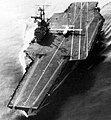File:Lockheed KC-130F Hercules aboard USS Forrestal (CVA-59) on 30 October 1963.jpg
Vai alla navigazione
Vai alla ricerca
Lockheed_KC-130F_Hercules_aboard_USS_Forrestal_(CVA-59)_on_30_October_1963.jpg (458 × 495 pixel, dimensione del file: 67 KB, tipo MIME: image/jpeg)
Cronologia del file
Fare clic su un gruppo data/ora per vedere il file come si presentava nel momento indicato.
| Data/Ora | Miniatura | Dimensioni | Utente | Commento | |
|---|---|---|---|---|---|
| attuale | 18:05, 21 feb 2010 |  | 458 × 495 (67 KB) | Kyteto | Cropped image to even the image out a bit |
| 20:39, 7 ott 2006 |  | 458 × 550 (40 KB) | Catsmeat | {{PD-USGov-Military-Navy}} USS Forrestal: CVA-59, with a C-130 on the deck. CV-59 Forrestal Category:C-130 Hercules |
Pagine che usano questo file
Le seguenti 2 pagine usano questo file:
Utilizzo globale del file
Anche i seguenti wiki usano questo file:
- Usato nelle seguenti pagine di da.wikipedia.org:
- Usato nelle seguenti pagine di de.wikipedia.org:
- Usato nelle seguenti pagine di el.wikipedia.org:
- Usato nelle seguenti pagine di en.wikipedia.org:
- Usato nelle seguenti pagine di fr.wikipedia.org:
- Usato nelle seguenti pagine di hu.wikipedia.org:
- Usato nelle seguenti pagine di ja.wikipedia.org:
- Usato nelle seguenti pagine di ko.wikipedia.org:
- Usato nelle seguenti pagine di ms.wikipedia.org:
- Usato nelle seguenti pagine di nl.wikipedia.org:
- Usato nelle seguenti pagine di pnb.wikipedia.org:
- Usato nelle seguenti pagine di pt.wikipedia.org:
- Usato nelle seguenti pagine di uk.wikipedia.org:
- Usato nelle seguenti pagine di vi.wikipedia.org:
- Usato nelle seguenti pagine di zh.wikipedia.org:


